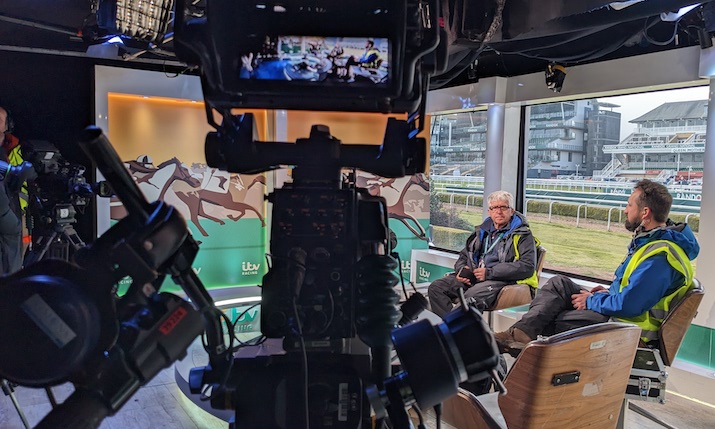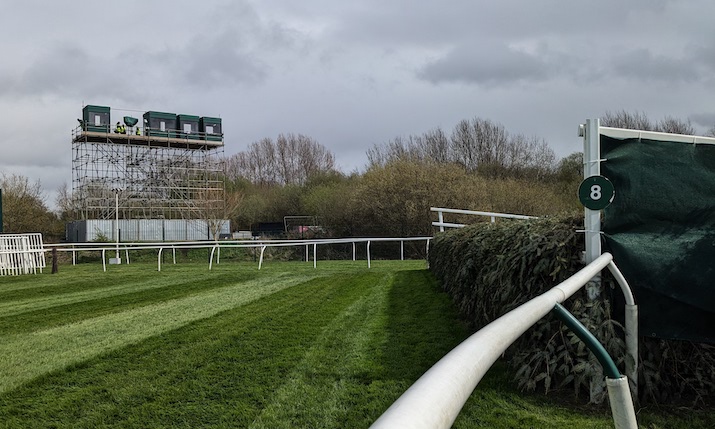Live from Aintree: Grand National rerun offers detailed new perspective for viewers in minutes

The ITV studio used to present analysis of the rerun
A unique part of the Grand National, which tales place on Saturday 15 April, is the ‘rerun’, where immediately after the live race finishes, a detailed analysis, led by Ruby Walsh alongside Oli Bell, is played back, fence by fence, showing how the race unfolded.
It’s become such a high-profile fixture of the live programme – and it is aired just 30 minutes after the main race finish – that it warrants its own production team and gallery. Rather than being a straightforward retransmission of the live coverage, the rerun uses different angles not included in the live coverage to enrich the story of the race. This is rehearsed on the Thursday and Friday for the Saturday and the build proper begins while the National is being cut in the main production gallery.
“The complexity of the rerun is such that you need a team dedicated to it,” explains Jon Harris, technical projects manager at NEP. “Logistically you are dealing with a number of replays, with fences that may have been filmed out of sequence. Depending on where the camera pointed and whether there were fallers or a horse pulled up you can get quite disorientated within the rerun.”
Walking the course
For example, a camera used in the main race sequence might then swing back to capture a reverse perspective and offer an alternative angle of a jockey being unseated, perhaps, or of the jockey getting up.
“Understanding the geography of the course and placement of the cameras is key for the rerun. I’ve often driven production staff around the course to give them landmarks to help their orientation so when they see a camera shot they can look in the background and identify landmarks which help identify the camera position,” he adds.
The rerun examines each fence in turn maximising every angle or replay available for that fence. Coverage relates to how many incidents there were at the fence. If all 40 runners clear it then there’s no need to dwell.
An internal graphics system is manually populated by stats as the race runs. This includes information such as who fell at which fence and which horse pulled up.
“This acts as the key information editorially as to how to plan the rerun,” says Harris. “At a glance you can see if there’s more information at one fence then you are likely to want to show more replays of that.”

The rerun analyses each fence in turn
The five EVS ops assigned to the rerun are constantly having to cross reference to ensure the shot that they are offering is the right fence. They have a map of the course and will log timecodes for each fence.
“Every recording we have has a timecode associated with it as a means of cross-checking that the angles they are offering up is of that particular fence,” he explains.
The three race commentators can also contribute over talkback into the truck to help analyse what happened. They can review replays of incidents that happened near them to clear up any confusion.
Walsh is able to remote control a Piero graphics system from an iPad to help him illustrate his analysis and works together with an experienced EVS op to identify suitable shots and angles that give a very different perspective to that of most viewers.
“His insight into racing is eye-opening,” says Rob Oldham, tech producer, ITV Sport. “What’s more, Ruby can spot something so quickly that no-one else will have noticed. It may be the way a horse is leading with a certain leg or the way a jockey is holding the crop or positioning after a fence. He really goes into the minutiae and he will explain it in a way that’s not technical and that makes sense to the audience.”

